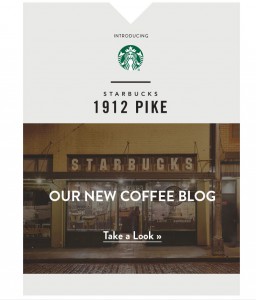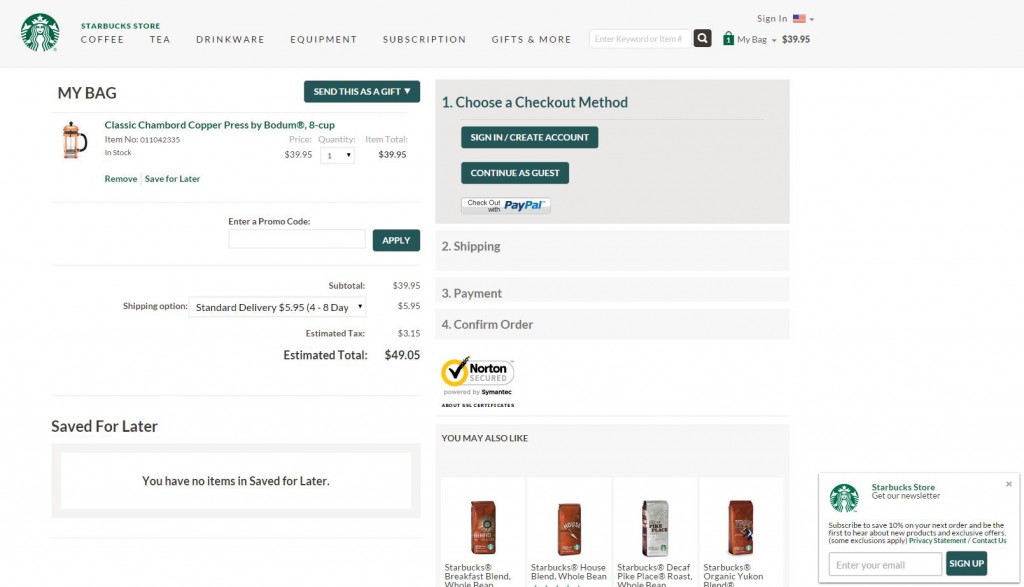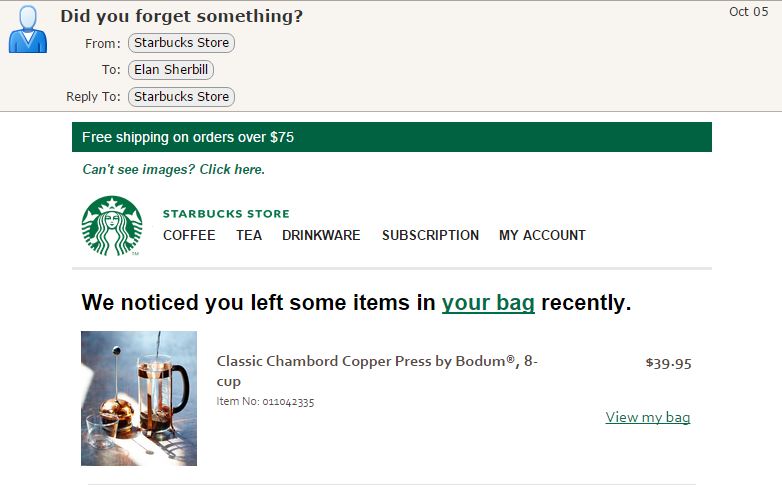According to one definition, content marketing is “delivering information that makes your buyer more intelligent … instead of pitching your products or services.” That is the content side of things. Marketing is the flip side of this coin. The end goal of content marketing is “driving profitable customer action.” Before we jump into things today, I want to note how intriguing it is that so many companies are embracing the content revolution. It’s almost as if there’s really something to all this content marketing.
As you know, dear readers, we enjoy the occasional real world observation. We take a real life ecommerce event, found in the wild, and analyze it for inspiration for our own ecommerce activities. For this blog post, we’re going to see how a well-known brand (Starbucks) uses content marketing to create online sales.
One form of content that Starbucks uses is a blog. They use it to publish content about the history of Starbucks and the best way to make an espresso. This is stuff that makes their readers more informed and engages their passion. Then they use email to let subscribers know about these blog posts. And if you’ve been reading this blog lately, you know how important we consider email marketing to the end goal of generating revenue.
The Email
Anyway, I got this email from Starbucks. It had a pretty bland subject line (“Let’s all raise a cup (and a million trees) to…”), so I am not sure why I opened the email in the first place, let alone scrolled down through it. But there I was scrolling through the email when I came upon this section ordering me to look at their new coffee blog:

For some reason, I followed their suggestion and started browsing the content in the blog. The blog includes various kinds of posts, and I thought this was a good strategy — provide a variety of content for different audiences.
Some of the posts focus on telling the history of the brand, providing the names and faces behind the success of Starbucks. It’s evocative of time and place and smell and taste. The post certainly has a vision and a message. “We love coffee,” it says. “And we try to share our passion with others.” This type of post is good for recreating the Starbucks experience and increasing engagement with the company.
Other posts were how-to videos. This type of post is what I consider effective thought leadership content. It’s highly educational. Starbucks is not worried that customers will abandon them once they learn how to brew the perfect cup of coffee. Even though they are giving their customers industry secrets for free, Starbucks is betting that customers still want a coffee experience that is much more enjoyable and effective than they could ever create on their own.
Increasing Revenue by Way of Content
But of course, the journey doesn’t end at the blog post. This is content marketing after all, and the goal is to persuade the reader to buy something. Upon completing each blog post, the visitor is offered a chance to connect financially with an item mentioned in the blog post, like this coffee press (points off to Starbucks for misspelling coffee in the example below):

After clicking on the Buy Now button, the reader lands in a nice clean shopping cart, complete with cross-sells and an enticing pop-up message with a discount in the bottom-right corner of the page:

Now what happens if you don’t convert then and there? Don’t worry. Starbucks will not let you forget you were once interested in something you saw on one of their blog posts.
Two days later, I received another email with the subject line that said, “Did you forget something?” The body of the email informed me that I had some products in my shopping cart that I could still buy.

Keystone
It’s interesting to think about how I went from an email to a blog post about the history of coffee beans to an ecommerce checkout process. If you are responsible for driving traffic from different parts of your website into an online store, you should think about the stories you want to tell and how they’re going to “drive profitable customer action.” When you start thinking like this, you stand a better chance at engaging your customers with content to drive sales.
I assume if you’re reading this that there are times when you wonder how to use content to sell products. Tell us what you thought of this example, or better yet, show us one of yours.